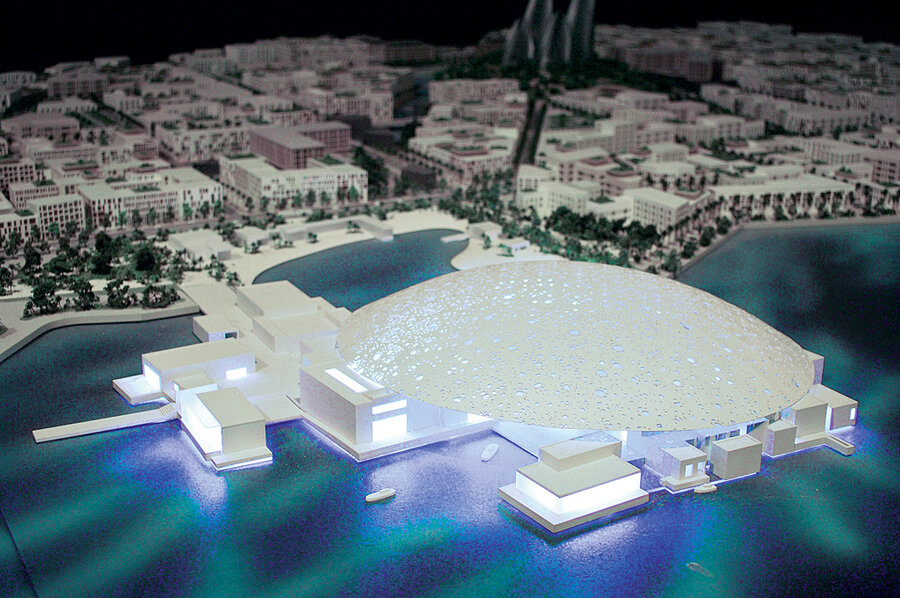Culture under construction in the United Arab Emirates
Loading...
| Abu Dhabi, U.A.E.
• A local, slice-of-life story from a Monitor correspondent.
The past is not even a distant memory in Abu Dhabi, the United Arab Emirates. There is no past. There is only the present, and the promising future, now under construction.
The future-focused Manarat Al Saadiyat museum displays a model for a new cultural district made up of four museums and a performing arts center. The district, expected to be completed by 2017, is being built on Saddiyat Island, a man-made island about 500 yards off the coast of Abu Dhabi. It will include Guggenheim Abu Dhabi, designed by Frank Gehry, composed of conical and rectangular towers; The Louvre Abu Dhabi, designed by Jean Nouvel, featuring a massive white dome with palm tree cutouts; and The Zayed National Museum, designed by Lord Norman Foster, with steel towers curved like birds’ wings.
The government hopes to draw tourists looking for culture amid beach luxury.
Get daily or weekly updates from CSMonitor.com delivered to your inbox. Sign up today.







